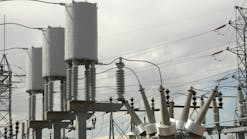‘Over and Over, We See that Pro-Transmission Policies at the State Level are Very Effective in Driving Success’
Earlier this year, a team of energy policy researchers outlined some of the key factors underlying the success—or lack thereof—of transmission projects across the country.
The researchers—Lewis (Zhaoyu) Wu, Abraham Silverman, Harrison Fell and James Glynn, then all active at the Center on Global Energy Policy at Columbia University’s School of International and Public Affairs—based their study on data from 1300 transmission projects between 2005 and 2023 that was compiled by MapSearch at Endeavor Business Media, a sister business to T&D World.
Among their findings: Strong regional and state planning programs do indeed make a difference when it comes to building out transmission infrastructure and regulated public utilities aren’t as efficient as merchant developers. Silverman, now a research fellow at Johns Hopkins University’s Ralph O’Connor Sustainable Energy Institute Center, recently sat down with T&D World to dig a little deeper into the big questions raised by his team’s paper, “A Quantitative Analysis of Variables Affecting Power Transmission Infrastructure Projects in the U.S.” Here are excerpts from that conversation.
What are the most important findings you think readers ought to take from the report?
Two big takeaways. First, the success rate for transmission that crosses state barriers is significantly lower than for other projects. Crossing state boundaries is associated with a 7% decrease in the likelihood of project success. This reveals a clear area where transmission development is breaking down, likely due to the need for multiple state approvals on cost and siting. It also shows just how much potential FERC’s upcoming transmission planning rule has to drive this type of cross-state transmission.
The biggest positive takeaway is that the impact of state and regional policies promoting transmission show up very clearly under our objective analysis of transmission development. Our map (at right) shows that Texas, with CREZ, MISO with LRTP, New York and California all show up as transmission leaders, with the brighter colors denoting more transmission.
You and your co-authors point out that some states or parts of the country have done a better job planning and guiding the additional of transmission capacity. Do you see laggards in this area catching up? How quickly can regulatory bodies move to adopt best practices here?
One of the most interesting findings is how quickly the amount of transmission getting planned/built can respond to state policies. New York, for example, was not among the top states for transmission getting built over the 20-year study period. However, when you look only at projects in the planning phase, New York jumps out as a transmission leader. This is a direct result of pro-transmission policies being adopted by New York policymakers over the past several years.
Based on your paper’s findings, how would you (re)build the transmission planning system from the ground up if you had the chance?
This is a great question. I would absolutely focus on the need for better planning for cross-border transmission facilities. This feels very relevant with FERC’s recent 1920 order and the federal permitting legislation recently released. I also think it highlights the need for state leadership in transmission. Over and over, we see that pro-transmission policies at the state level are very effective in driving success.
How do you think about the rapid emergence of renewables as it relates to transmission project planning?
It’s certainly no coincidence that areas of the country with the most successful integration of new clean energy resources are also those that have the largest amount of transmission. Of course, the causal arrows point both ways but I think experience shows that renewables thrive when the transmission grid is strong.



